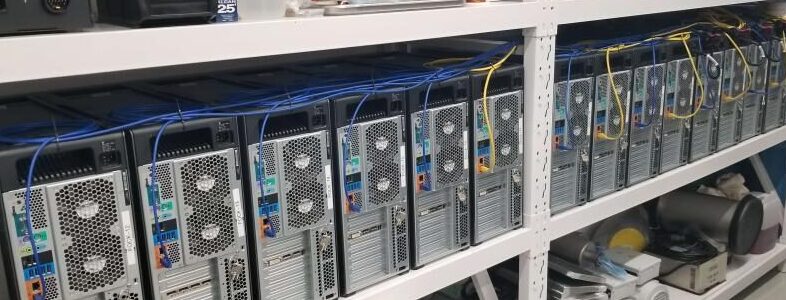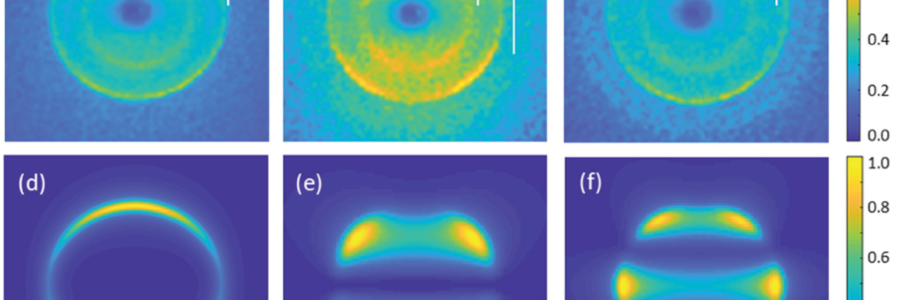exFock is the latest iteration of the Fock Cluster. This has been in use by the NRC theory group for several years, and recently superseded. As of early 2023, some nodes have been passed on to the experimental groups for general computational use. (For a general introduction to computational clusters, try this overview or the wikipaedia page.)
exFock is a 14+1 node linux cluster for CPU-compute, each with dual Intel Xeon E5-2660 v4 @ 2.00GHz CPU, 128Gb ECC RAM and ~700Gb fast scratch space, running Ubuntu 16LTS. The cluster is managed by a head node with ~8Tb shared storage, with a gigabit Ethernet backbone. (Limited GPU-compute is also available, via NVidia Quadro K2200 cards – one per node, CUDA compute capability 3.0, 640 CUDA cores, 4Gb RAM per card.)
Computational jobs can be dispatched via Slurm or Docker. The former was in use by the theory group (mainly for electronic structure and molecular dynamics codes, running from local shared installations); the latter has just been added to exFock and is suggested for ongoing general use to avoid issues with OS-specific applications and compilation, as well as general sandboxing and as an easy way to enable local user development and testing capabilities (since the Docker containers are fully portable). Note that initial users may need some basic background knowledge whilst exFock is in the setup/trial stage, although the barrier to entry will gradually drop over time. A global installation of Jupyter (Hub) is also planned in the near future, for general data analysis tasks, and will offer a lower barrier to entry for users interested in data analysis tasks.
If you’re interested in using exFock, please use the registration form below (or via the google form page). For more on our heterogeneous compute projects, see here.





